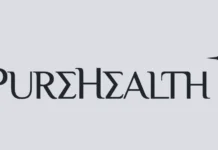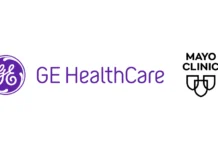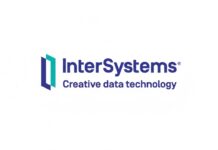When healthcare organizations merge or undergo acquisition, executives inherit a complex landscape of cybersecurity vulnerabilities, privacy compliance gaps, and integration challenges that multiply risks far beyond what either organization faced independently. The healthcare mergers acquisitions executive security dimension represents one of the most overlooked yet consequential aspects of transaction planning and execution.
The Hidden Vulnerabilities in Acquired Organizations
Healthcare mergers and acquisitions create unique cybersecurity conditions that dramatically elevate breach risks. Research demonstrates that the likelihood of a data breach doubles in the year before and after healthcare M&A activity closes, rising from 3% to 6% during transition periods. This alarming statistic reflects the turbulent conditions characterizing organizational combinations, where competing priorities, diverted attention, and system complexity create exploitable vulnerabilities that adversaries actively target.
The root causes of elevated M&A cybersecurity risks extend across technical, organizational, and human dimensions. Healthcare organizations typically operate highly customized IT infrastructures reflecting decades of incremental technology decisions, vendor selections, and workflow adaptations. When two such infrastructures combine, incompatibilities create seams and gaps that attackers can exploit more easily than mature, unified environments.
Control misalignment represents perhaps the most consequential vulnerability emerging during healthcare M&A transitions. Acquiring organizations may employ state-of-the-art security controls including advanced endpoint detection, zero-trust network architecture, and robust identity management. Meanwhile, acquired entities might rely on unsupported legacy firewalls, minimal endpoint protection, and password-only authentication. During integration, these vastly different security postures coexist uneasily, creating weaknesses that undermine the stronger organization’s defenses.
The complexity of healthcare data ecosystems amplifies M&A security challenges beyond what occurs in other industries. Healthcare organizations maintain not only administrative and financial systems but also electronic health records, medical devices, laboratory systems, imaging platforms, and specialized clinical applications. Each system category presents distinct security requirements, vendor relationships, and integration challenges. Merging these ecosystems without introducing vulnerabilities demands extraordinary care that transaction timelines rarely permit.
Hidden breaches in acquired organizations represent catastrophic surprises that executives discover too late. Many sophisticated cyberattacks remain undetected for months or years while adversaries maintain persistent access to systems, exfiltrate data gradually, and establish backdoors enabling future access. Due diligence processes focused primarily on financial, legal, and operational factors may entirely miss ongoing compromises that become the acquiring organization’s liability immediately upon transaction close.
Vendor and third-party relationships inherited through acquisitions introduce supply chain risks that acquiring executives may not initially recognize. Healthcare organizations typically maintain hundreds or thousands of vendor relationships including electronic health record providers, billing services, medical device manufacturers, and specialized clinical technology vendors. Each relationship potentially grants third-party access to sensitive systems and data. During M&A transitions, visibility into these relationships becomes fragmented, creating security blind spots.
Executive Information Exposure During Due Diligence
The healthcare M&A due diligence process itself creates privacy risks for executives as sensitive leadership information circulates among transaction parties, advisors, and potential investors. Financial records, compensation details, employment contracts, and personal background information about acquiring and target company executives all become part of due diligence materials exchanged during transaction evaluation.
Confidentiality agreements governing due diligence provide legal frameworks but cannot guarantee information protection. Data rooms containing sensitive executive information may be accessed by multiple parties including investment bankers, legal counsel, consultants, and prospective buyers who ultimately don’t complete transactions. Each access point represents potential exposure that executives must accept as unavoidable transaction cost.
Healthcare executives serving on boards of organizations undergoing M&A activity face particular exposure. Board members’ personal information, compensation arrangements, and governance activities become subject to scrutiny by acquiring entities evaluating leadership quality and potential retention. This visibility creates opportunities for data leakage that could affect board members’ privacy and reputations beyond the immediate transaction.
Cybersecurity due diligence itself paradoxically creates security risks by requiring detailed disclosure of vulnerabilities, incident histories, and security control weaknesses. Target organizations must reveal their security postures honestly to enable acquirer risk assessment, but this disclosure creates comprehensive roadmaps of exploitable vulnerabilities. If transaction discussions fail and parties separate, this security intelligence could potentially be misused.
Executive transition planning during M&A involves extensive discussions about leadership retention, role changes, and potential departures. These discussions necessarily involve sharing information about executive capabilities, performance histories, and future plans. When leadership changes ultimately occur, the information gathered during transition planning may follow executives to new positions or become part of their professional records.
The compressed timelines characterizing many healthcare M&A transactions pressure due diligence teams to gather information rapidly, sometimes through channels and methods creating additional security risks. Rush requests for data, after-hours system access, and expedited sharing of sensitive materials may bypass normal security protocols, inadvertently exposing executive and organizational information.
System Integration Challenges and Multiplied Footprints
The technical challenges of integrating disparate healthcare IT systems during M&A create extended periods of elevated vulnerability while executives scramble to unify incompatible platforms, consolidate data centers, migrate applications, and establish consistent security controls across combined organizations.
Network integration represents an early and consequential integration decision with significant security implications. Acquiring organizations must decide whether to maintain separate networks temporarily, create limited interconnections between organizations, or pursue rapid full integration. Each approach carries distinct security trade-offs involving visibility, control, and risk exposure during transition periods.
Identity and access management grows exponentially complex as organizations combine user populations, application portfolios, and authentication systems. Employees from acquired organizations require access to new systems while potentially retaining access to legacy systems during transition periods. This proliferation of accounts, credentials, and access rights creates confusion about who can access what information and when access should be revoked.
Data migration projects essential to M&A integration create vulnerabilities as sensitive information moves between systems, networks, and locations. Healthcare records, financial data, and operational information traveling across networks or residing in temporary storage become exposure points that attackers specifically target during known M&A transitions. Encryption, access controls, and monitoring prove essential but challenging to maintain consistently during migration chaos.
Application rationalization processes following M&A involve evaluating redundant systems, selecting platforms to retain, and planning migrations or retirements. During these evaluation and transition periods, organizations maintain parallel systems creating duplicative data, increasing attack surfaces, and consuming security resources required for protection. The extended timelines typical of healthcare application migrations prolong these vulnerabilities.
Cloud integration presents particular challenges as organizations combine on-premises infrastructure with cloud deployments and attempt to consolidate multiple cloud environments. Healthcare organizations increasingly adopt cloud services for electronic health records, data analytics, and clinical applications. Merging cloud strategies, consolidating tenants, and establishing unified security controls across hybrid environments demands specialized expertise often in short supply.
Cultural Differences in Privacy and Security Approaches
Healthcare M&A brings together organizational cultures with potentially divergent attitudes toward cybersecurity priorities, privacy protection, and risk tolerance. These cultural differences can undermine security effectiveness as combined organizations struggle to align values, practices, and resource commitments around information protection.
Security maturity disparities between merging organizations create tensions about appropriate control levels, acceptable risks, and necessary investments. Organizations with mature security programs may view acquired entities’ practices as dangerously inadequate, while acquired organizations may perceive new security requirements as bureaucratic obstacles to operational efficiency. Bridging these perception gaps requires patient culture building that transaction timelines rarely accommodate.
Compliance culture differences emerge when organizations with varying regulatory history and approaches to HIPAA obligations combine. Some healthcare entities maintain minimal compliance programs focused on avoiding penalties, while others embrace compliance as foundational to operational excellence. Harmonizing these divergent approaches requires sustained leadership commitment and clear messaging about expectations in the combined organization.
Risk appetite variations between acquiring and acquired organizations affect decisions about security investments, acceptable vulnerabilities, and response to identified threats. Conservative organizations prioritizing risk avoidance may clash with more risk-tolerant entities focused on operational efficiency and innovation. Executive leadership must establish clear risk tolerance frameworks for combined organizations while respecting legitimate differences in mission and market position.
The healthcare sector’s mission-driven culture creates additional complexity during M&A integration. Staff and leaders often strongly identify with organizational missions, patient populations served, and community relationships. Security initiatives perceived as undermining patient care or operational effectiveness face cultural resistance requiring careful change management and mission-alignment messaging.
Insider Threats During Leadership Transitions
Healthcare M&A transitions create elevated insider threat risks as employee uncertainty, leadership changes, and organizational disruption create conditions where malicious or negligent insiders might compromise security.
Employee anxiety about job security following M&A announcements creates psychological conditions associated with increased insider risk. Staff uncertain about their futures may become disgruntled, lose commitment to organizational goals, or actively seek to harm organizations they perceive as threatening their livelihoods. These emotional reactions translate into security risks including data theft, sabotage, or neglect of security responsibilities.
Leadership transitions accompanying M&A involve executives and managers leaving organizations, changing roles, or joining from acquired entities. Each transition creates access credential issues as departing leaders retain inappropriate system access, incoming leaders receive excessive privileges, or role changes leave orphaned accounts with elevated permissions. Managing identity lifecycle during organizational flux proves extraordinarily challenging.
Privileged user populations expand during M&A as multiple administrative teams maintain infrastructure, consultants access systems for integration projects, and temporary elevated access proliferates to facilitate rapid changes. Each privileged account represents elevated risk if compromised or misused. Tracking, monitoring, and controlling this expanded privileged population strains security capabilities.
Intellectual property and sensitive data theft by departing executives or acquired company personnel represents serious risks during transitions. Leaders with deep knowledge of strategies, patient data, research information, or competitive intelligence might view M&A transitions as opportunities for personal gain through information theft. Organizations must balance trust in transitioning leaders with appropriate monitoring and controls.
The stress and workload accompanying M&A integration create conditions where even well-intentioned insiders make security mistakes. Exhausted staff working long hours, under pressure to meet integration deadlines, while adapting to new systems and processes naturally make more errors than during stable operations. These unintentional mistakes create vulnerabilities alongside intentional insider threats.
Building Integrated Security During Organizational Transition
Healthcare executives navigating M&A transitions must simultaneously manage immediate integration demands while building foundations for long-term security in combined organizations. This dual focus requires strategic planning, adequate resources, and sustained leadership attention throughout extended integration periods.
Cybersecurity due diligence should commence early in M&A processes, receiving priority comparable to financial and legal diligence. Comprehensive security assessments evaluate target organizations’ security postures, identify vulnerabilities requiring remediation, quantify security debt requiring investment, and inform transaction valuations and integration planning. Early identification enables proactive risk management rather than reactive crisis response.
Integration planning must explicitly address security requirements from earliest stages rather than treating cybersecurity as IT implementation detail. Security considerations should shape network design decisions, drive identity management strategies, inform application selection processes, and influence integration sequencing. Integrating security into strategic planning prevents expensive retrofitting and reduces vulnerability windows.
Dedicated integration security teams combining expertise from both organizations provide essential capacity for managing transition risks. These teams should report to executive leadership, receive adequate resources and authority, and maintain focus specifically on security aspects of integration rather than competing with operational priorities. Executive sponsorship signals organizational commitment to secure transitions.
Continuous monitoring throughout integration periods enables early detection of emerging threats and rapid response to incidents. Healthcare M&A creates extended exposure windows when normal monitoring capabilities may be disrupted. Enhanced monitoring compensates for elevated baseline risk and fragmented visibility during system consolidation.
Communication strategies addressing security during M&A should provide transparency to employees, patients, and stakeholders about integration plans, security commitments, and incident response capabilities. Transparent communication builds trust, reduces anxiety driving insider risks, and demonstrates organizational commitment to protecting sensitive information throughout transitions.
Executive Leadership Through Secure Transitions
Healthcare mergers acquisitions executive security demands sophisticated understanding of vulnerability patterns, proactive risk management, and sustained leadership commitment throughout extended integration periods. Healthcare executives recognizing M&A as creating predictable security challenges rather than hoping transitions proceed without incident position their organizations for success. The investment in secure integration protects not only technical systems and sensitive data but also organizational reputation, regulatory standing, and the personal privacy of leaders stewarding these complex transitions.


















